TABLE OF CONTENTS
Have you ever wondered what Processor (CPU) is best for rendering?
Finding the best CPU for rendering, which is also as cheap as possible, is something you will want to do before building a new Computer for 3D Rendering, or a dedicated Render node/ Renderfarm.
3ds Max, Maya, Cinema 4D, Blender, and many other 3D software packages have in-built or 3rd-party CPU Render Engines that all rely directly on your CPU’s multi-core performance.
But because there are so many CPUs with all kinds of clock-speeds, core-counts, hyperthreading, or brand, it can become quite cumbersome to select the right one to go with.
AMD Ryzen, Threadripper, Intel i5, i7, i9, XEON, Celeron, some with many cores and others with high core clocks.
Ultimately, it all comes down to raw CPU Rendering performance, which I will be measuring with Cinebench, the currently leading Benchmarking Software for CPU Rendering Performance.
Of course, there are lots of lists online to check cinebench points, but even more important than scores is how well the performance/dollar ($) ratio is since spending an unnecessary amount on a CPU is something we’ll all want to avoid.
This is why I have created a performance/dollar ($) table which you can sort to your liking.
This will show you the best Rendering CPU for the money:
Best CPU for 3D Rendering
Performance / Dollar ($): Higher is better.
CPU rendering performance based on Cinebench R23 scores: Higher is better.
▮ = AMD | ▮ = Intel
| CPU Name | CPU Rendering Performance | Price ($) | Performance / Dollar* |
|---|---|---|---|
| AMD Threadripper PRO 5965WX | 40535 | 2399 | |
| AMD Threadripper PRO 5975WX | 53977 | 3299 | |
| AMD Threadripper PRO 5995WX | 66403 | 6499 | |
| AMD Ryzen 7 1700X | 8869 | 230 | |
| AMD Ryzen 5 5600G | 11285 | 259 | |
| AMD Ryzen 7 5700X | 14214 | 299 | |
| AMD Ryzen 7 5800X3D | 15003 | 449 | |
| AMD Ryzen 5 7600X | 14780 | 299 | |
| AMD Ryzen 7 7700X | 20144 | 399 | |
| AMD Ryzen 9 7900X | 30020 | 549 | |
| AMD Ryzen 9 7950X | 40795 | 699 | |
| AMD Ryzen 5 5500 | 10710 | 159 | |
| AMD Ryzen 5 5600 | 11429 | 199 | |
| AMD Ryzen 3 3100 | 5423 | 99 | |
| AMD Ryzen 3 3300X | 6787 | 120 | |
| AMD Ryzen 5 2600X | 7523 | 229 | |
| AMD Threadripper 1900X | 8979 | 299 | |
| AMD Ryzen 5 3600 | 9073 | 199 | |
| AMD Ryzen 5 3600X | 9526 | 236 | |
| AMD Ryzen 5 3600XT | 9945 | 249 | |
| AMD Ryzen 7 2700X | 10140 | 329 | |
| AMD Ryzen 5 5600X | 11201 | 230 | |
| AMD Ryzen 7 3700X | 12195 | 329 | |
| AMD Ryzen 7 3800XT | 12955 | 399 | |
| AMD Ryzen 7 3800X | 13848 | 339 | |
| AMD Ryzen 7 5700G | 14350 | 359 | |
| AMD Ryzen 7 5800X | 14812 | 300 | |
| AMD Threadripper 1920X | 15038 | 799 | |
| AMD Ryzen 9 3900XT | 18511 | 499 | |
| AMD Ryzen 9 3900X | 18682 | 434 | |
| AMD Threadripper 2950X | 18797 | 899 | |
| AMD Threadripper 1950X | 19635 | 999 | |
| AMD Ryzen 9 5900X | 22046 | 450 | |
| AMD Ryzen 9 3950X | 26375 | 749 | |
| AMD Threadripper Pro 3955WX | 27175 | 1149 | |
| AMD Ryzen 9 5950X | 28782 | 600 | |
| AMD Threadripper 2990WX | 29651 | 1799 | |
| AMD Threadripper 3960X | 34932 | 1399 | |
| AMD Threadripper Pro 3975WX | 43450 | 2749 | |
| AMD Threadripper 3970X | 46874 | 1999 | |
| AMD Epyc 7702P | 48959 | 4425 | |
| AMD Threadripper Pro 3995WX | 73220 | 5489 | |
| AMD Threadripper 3990X | 75671 | 3990 | |
| Intel i5 13600K | 24528 | 329 | |
| Intel i7 13700K | 31069 | 409 | |
| Intel i9 13900K | 41012 | 589 | |
| Intel i9 10980XE | 25490 | 979 | |
| Intel i9 9920X | 14793 | 1189 | |
| Intel i9 9960X | 17953 | 1684 | |
| Intel i9 9980XE | 27093 | 1979 | |
| Intel i9 9900X | 13994 | 989 | |
| Intel i5 9600K | 6596 | 262 | |
| Intel i7 9700K | 9428 | 385 | |
| Intel i9 9900K | 12470 | 499 | |
| Intel i7 10700K | 13302 | 384 | |
| Intel i9 10850K | 16820 | 464 | |
| Intel i9 10900K | 18034 | 499 | |
| Intel i5 11600K | 11277 | 272 | |
| Intel i7 11700K | 14812 | 409 | |
| Intel i5 12400 | 12344 | 199 | |
| Intel i5 12400F | 12321 | 174 | |
| Intel i9 11900K | 16211 | 549 | |
| Intel i5 12500 | 12974 | 212 | |
| Intel i7 12700F | 21568 | 324 | |
| Intel i5 12600K | 17660 | 299 | |
| Intel i7 12700K | 23488 | 419 | |
| Intel i9 12900F | 26455 | 494 | |
| Intel i9 12900KF | 27472 | 574 | |
| Intel i9 12900K | 27483 | 589 | |
| Intel i9 12900KS | 27796 | 739 | |
| CPU Name | CPU Rendering Performance | Price ($) | Performance / Dollar* |
Now you know the best performance/price ratio of different CPUs when it comes to pure CPU rendering.
Keep in mind, to truly find not just the best performing CPU for rendering, but the best overall system for your rendering needs, you should also consider:
- Power consumption: Does the CPU need lots of power and drive up your power bill?
- Single- vs. multi-CPU systems: What is the overall system price per CPU? Some CPUs can be installed into multi-CPU systems, which might reduce the overall system price per CPU
- Heat: Does the CPU get very hot? Will you need a loud and expensive cooling solution? Ryzen and Threadripper CPUs tend to be easily cooled
- CPU-Cooler price: Some CPUs, such as the AMD Ryzen CPUs, have a CPU Cooler included in the package already, which has to be factored in when comparing CPUs
- Motherboard/RAM price: A cheap CPU might not be such a great deal if you need an expensive motherboard or RAM for it
- Number of cores (performance) per system: A Ryzen 5 5500 might have extremely high CPU Rendering value, but you will also need multiple of those CPUs (and therefore multiple systems) to get to the performance of a single Threadripper 3990X
If your rendering demands are high and a single PC may not be enough, be sure to check our guide on building your own Renderfarm.
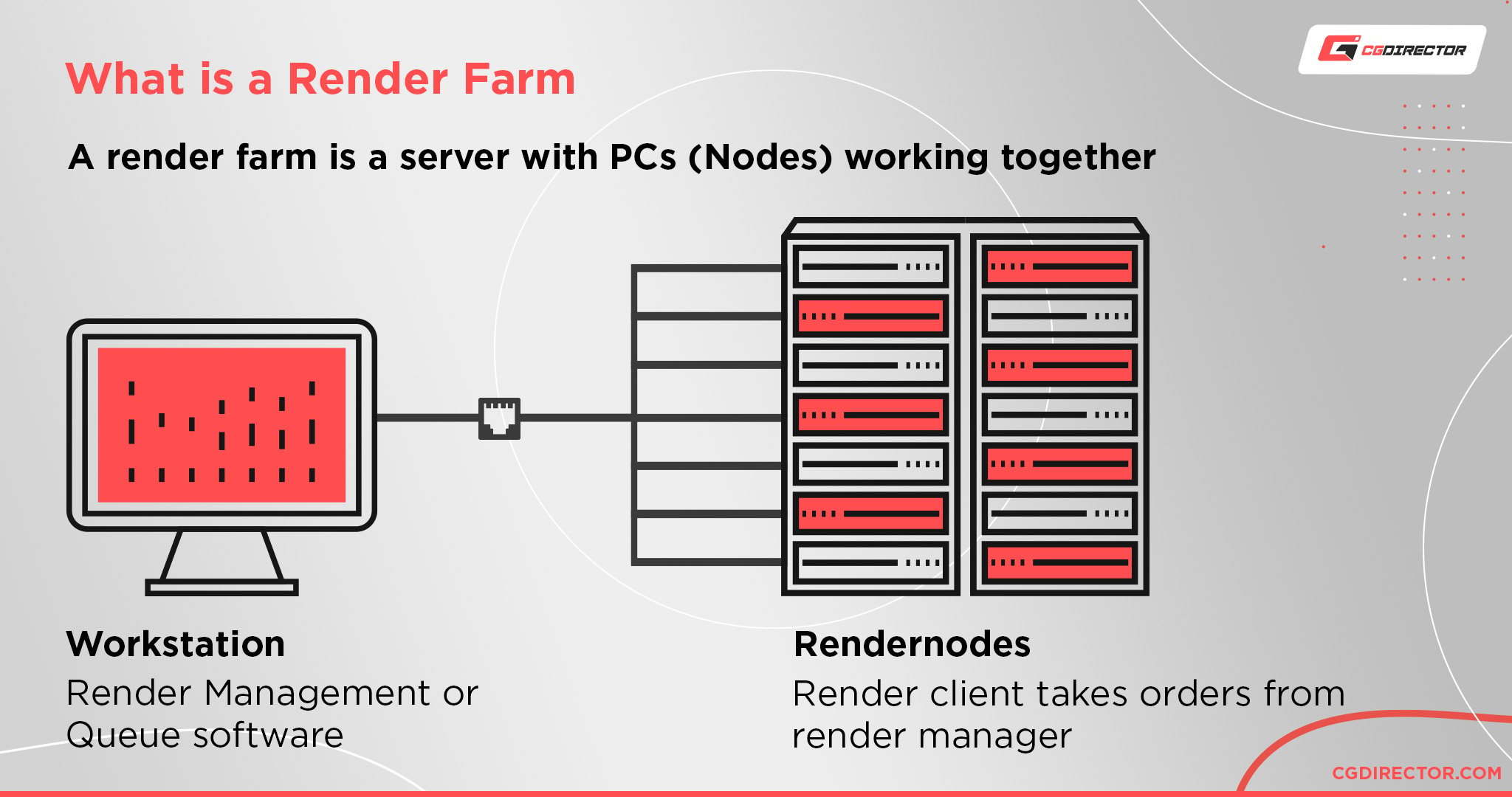
AMD Ryzen 9 7950X vs Intel i9 13900K
I have been asked this several times, as both of these CPUs are extremely popular. 7950X vs 13900K. Which one is better for rendering?
So let’s make a quick comparison:
- AMD Ryzen 9 7950X: 16 Cores, 32 Threads, draws less power, Stays cooler – 40795 Cinebench (R23) Points
- Intel Core-i9 13900K: 24 Cores, 32 Threads, 10% higher single-core performance, can get hot with high power draw – 41012 Cinebench (R23) Points
If you put everything but performance aside, it usually comes down to the following:
- Are you rendering a lot and want lower noise and power draw? Get a Ryzen 9 7950X.
- Do you actively work on this PC a lot? Get a Core-i9 13900K.
One of these two CPUs is usually what you would choose when building a Computer for Animation or a Computer for 3D Modeling, as they are some of the highest-clocking CPUs out there.
High Core-Counts vs. high Core-Clock
Both high core-counts and high core-clocks will improve your rendering speeds. Having more cores is usually the best price/performance way of increasing 3D CPU rendering speed.
Of course, rendering alone isn’t what you usually do on a typical workstation. When actively working on it, be it in 3D, Photo Editing, Graphic Design, or Video Editing, having high core-clocks will benefit you much more than having many cores.
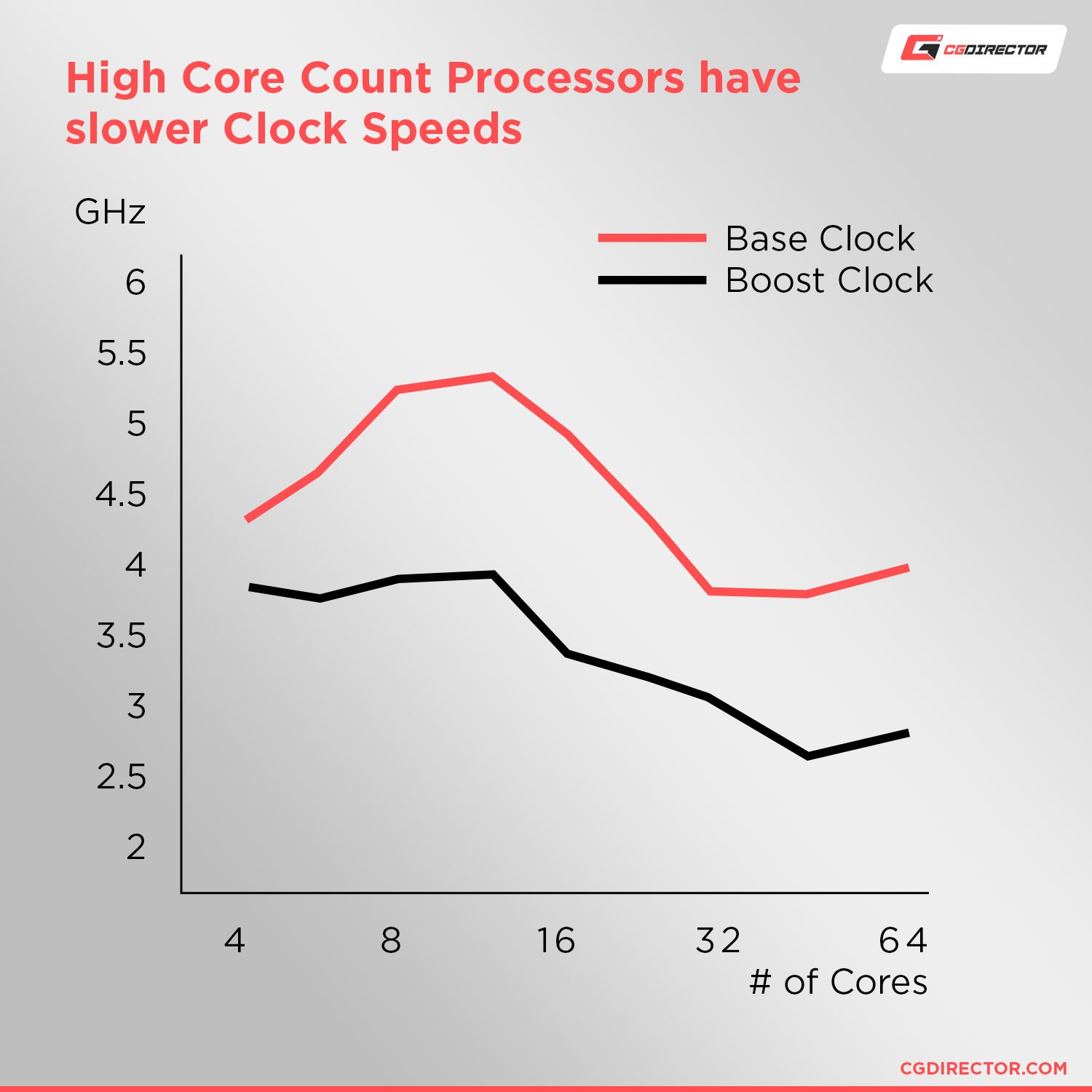
This means it would be best to have both lots of cores and high core clocks. Since CPUs usually trade cores for clock speeds (because of thermal and power limits) you typically have to find a middle ground between the number of cores and clock-speed, though.
Best CPU for Rendering on a Laptop
Now, all of the above are CPUs that would be built into a 3D Rendering Computer or Workstation. If you are interested in using something more mobile, say, a Laptop for Animation, whilst enjoying fantastic CPU rendering speed, then the following list is for you:
▮ = AMD | ▮ = Intel | ▮ = Apple
| CPU Name | Single Core Performance | Multi Core Performance | Performance Total* |
|---|---|---|---|
| Intel Core i9-12950HX | 1927 | 23019 | |
| Intel Core i9-12900HX | 1902 | 18845 | |
| Intel Core i9-12900HK | 1938 | 18197 | |
| Intel Core i7-12700H | 1806 | 16745 | |
| Intel Core i9-12900H | 1917 | 16555 | |
| AMD Ryzen 9 6980HS | 1669 | 14736 | |
| AMD Ryzen 9 6980HX | 1669 | 14711 | |
| AMD Ryzen 9 6950HS | 1662 | 14670 | |
| AMD Ryzen 9 6950H | 1662 | 14670 | |
| AMD Ryzen 7 6800H | 1499 | 13611 | |
| AMD Ryzen 9 6900HX | 1662 | 14670 | |
| AMD Ryzen 9 6900HX | 1662 | 14670 | |
| AMD Ryzen 9 6900HS | 1579 | 13977 | |
| Intel Core i9-11980HK | 1574 | 13977 | |
| AMD Ryzen 9 5900HX | 1478 | 13875 | |
| AMD Ryzen 9 5980HX | 1524 | 13460 | |
| AMD Ryzen 9 5980HS | 1521 | 12844 | |
| Intel Core i9-11950H | 1574 | 12836 | |
| Intel Core i9-11900H | 1540 | 12354 | |
| Intel Core i7-11850H | 1517 | 12354 | |
| Intel Core i7-11800H | 1492 | 12180 | |
| AMD Ryzen 7 5800HS | 1339 | 10472 | |
| AMD Ryzen 5 5600H | 1370 | 10123 | |
| AMD Ryzen 7 5700U | 1274 | 9555 | |
| Intel Core i5-11500H | 1492 | 9532 | |
| AMD Ryzen 5 5600HS | 1342 | 9439 | |
| AMD Ryzen 5 5500U | 1165 | 6784 | |
| Intel Core i5-1185G7 | 1538 | 6264 | |
| Intel Core i5-1165G7 | 1504 | 6070 | |
| Intel Core i5-1135G7 | 1343 | 5913 | |
| Intel Core i7-11370H | 1517 | 5812 | |
| Intel Core i5-1145G7 | 1419 | 5059 | |
| Apple M1 | 1528 | 7799 | |
| Apple M2 | 1701 | 8538 | |
| Apple M1 Pro | 1543 | 12170 | |
| Apple M2 Pro | 1701 | 15248 | |
| Apple M1 Max | 1555 | 12422 | |
| Apple M2 Max | 1701 | 15248 | |
| CPU Name | Single Core Performance | Multi Core Performance | Performance Total* |
*Weighted. Total Performance (column) is relative to an Intel i7 11700k, weighed equally at 50% single-core and 50% multi-core performance. This weighing will indicate good all-round performance for most workloads.
If you’re running very specific tasks, that you know demand, e.g., many cores (such as CPU rendering), sort the table by multi-core performance. Or, if you’re certain your workloads only need high single-core performance, sort by that column.
Benchmark used for this list is Cinebench R23.
Benchmarks vs. Real World
One should be aware that benchmarks are usually not representative of all types of real-world workloads.
A Threadripper 3990WX (review), for example, is extremely fast at rendering scenes that would otherwise spend a huge amount of time in the bucket-rendering phase (the phase that is parallelized most easily. Most modern render engines are transitioning to make this the “progressive” phase, where you progressively see your rendered scene more clearly every few seconds).
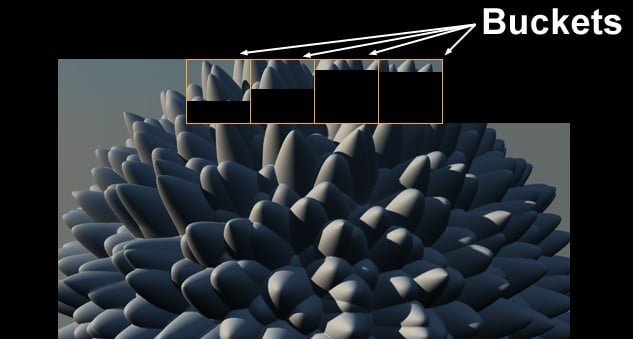
When rendering frames that don’t take very long (< 1 min), having multiple lower-end CPUs instead of one very powerful CPU is usually better. This is because you can’t perfectly parallelize the entire rendering process!
There are lots of steps involved in Rendering:
- Preparation time
- Mesh exporting
- Texture loading time
- Cache building time
- Ray-Tracing tree-building time
- Light-Cache and other GI-Caching times
.. to only name a few. These are all rendering steps that are done before the more well-known (visual) bucket/progressive rendering stage even starts.
Some of these stages might even be restricted to a single CPU core. And when you have 64 cores (as in the Threadripper 3990X), 63 of those Cores will have to wait idly until these preparation steps are done.
Lots of these benchmarks, such as Cinebench, mainly measure the visual bucket/progressive rendering phase where a multi-core CPU with many cores pulls ahead easily, as the underlying scenes are usually not all that complex (Read as: there is almost no “single-core” preparation–time involved in benchmarks).
Long story short:
Make sure to analyze the type of scenes you are planning to render. Measure what rendering stage usually takes up the most time in a few of your typical scenes. Keep an eye on the CPU-utilization in your Task Manager to see if the current rendering phase uses all CPU Cores or only a few to find out what has to be improved.
Most CPU render engines nowadays show the current rendering stage somewhere in the render window, like in the example below taken from Cinema 4D’s picture viewer [Updating Geometry]:

Be sure to also check our guide on how to render faster. It’s an in-depth primer on scene optimization and should help you speed up your renders, maybe even postponing the need to buy new & expensive components.
Custom PC-Builder
If you want to get the best compatible parts for your workloads that are also within a specific budget you’re working with, you should definitely have a look at our web-based PC-Builder Tool.
Select “CPU Rendering” as your main purpose and adjust your budget to create the perfect PC with part recommendations that will fit within your budget.
Need even more Rendering performance?
There are 4 popular ways to speed up your rendering performance.
- Optimize your scene, so it renders faster: Here’s our Guide on this.
- Buy a faster CPU or GPU for your workstation. You are already reading the CPU Guide; here’s the GPU Guide.
- If a single workstation doesn’t cut it anymore, build your own render farm with multiple render nodes: We wrote an in-depth Guide on that as well.
- And if all of the above still isn’t fast enough for you, you’ll need to utilize an online Render farm: Our Guide on online Renderfarms.
FAQ
Is Intel or AMD better for rendering?
AMD’s Threadripper CPUs are clearly in the lead when it comes to CPU rendering. Core-Count, performance per dollar, and lower power consumption, AMD currently has the better CPUs for pure multi-core CPU rendering.
Is GPU rendering faster than CPU rendering?
GPU rendering is usually considerably faster than CPU rendering when comparing performance per dollar on a CPU and GPU. A GPU’s architecture and its thousands of CUDA / Stream-processing cores are purpose-made for parallel processing and easily outperform a CPU.
Faster interactive & real-time previews bring your 3D Projects to a whole new level of quality, thanks to the added iterative capabilities that are made possible with GPU rendering.
GPUs can also be more easily added to, scaled, and carried over throughout multiple motherboard/CPU generations, making them more cost-effective long-term.
Direct performance comparisons, though, are challenging to conduct, as the feature-set of GPU and CPU render engines differ too much, and images don’t always look the same when rendered. Hybrid engines come close, but they, too, don’t always support every feature across both hardware components.
Does the CPU affect GPU rendering performance?
The CPU can affect GPU rendering performance. The CPU’s task is to prepare parts of the 3D Scene and send assets to the GPU. On very short renders, the CPU becomes a considerable factor. The longer your Bucket-rendering phase (pure GPU) lasts, the less the CPU impacts render-time.
If your entire scene fits into your GPU’s VRAM, the CPU’s impact on render-time is lower than when you’re utilizing out-of-core access to the Systems RAM.
Is RAM important for rendering?
Sufficient RAM is essential for CPU Rendering. The CPU holds your 3D Scene in Memory and accesses its contents throughout the rendering phase. If your Scene is too large and does not fit into your RAM, it’ll be swapped to your storage disc, which is considerably slower than RAM.
Always make sure you have enough RAM.
Is Ryzen good for Rendering?
AMD Ryzen CPUs are great for rendering in CPU-based render engines. CPU render engines scale almost linearly with more cores, though, so high-core-count Threadripper CPUs (up to 64 Cores), for example, will fare even better.
When buying a Ryzen CPU to maximize CPU rendering performance, make sure to buy one with as many cores as possible.
Over to you
What kind of Computer are you building? Feel free to ask for help in the comments or in our expert forum.
![Best CPU For Rendering [2024 Guide] Best CPU For Rendering [2024 Guide]](https://www.cgdirector.com/wp-content/uploads/media/2017/04/BestCPUForRendering-Twitter_1200x675-1200x675.jpg)
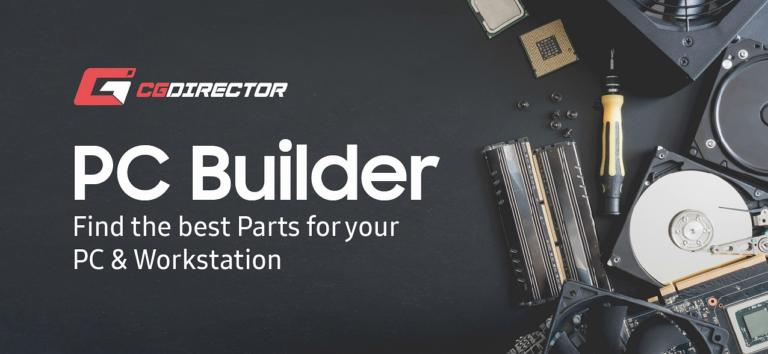
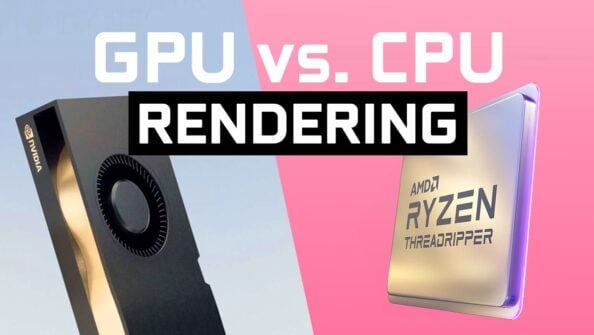
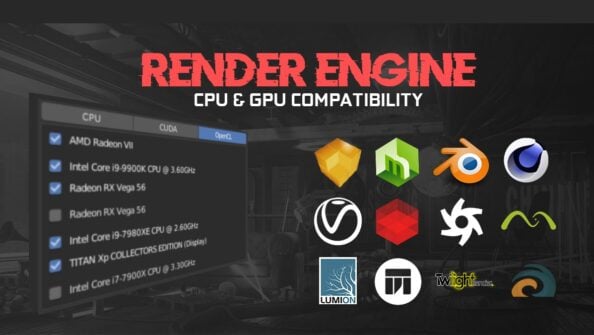
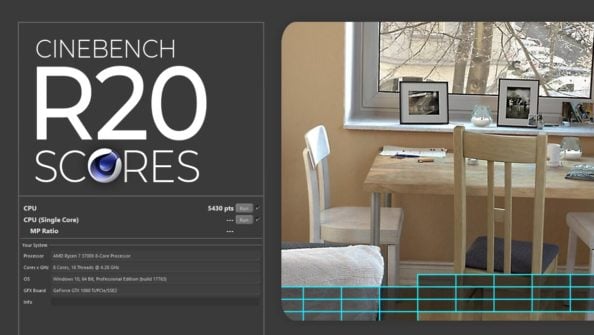
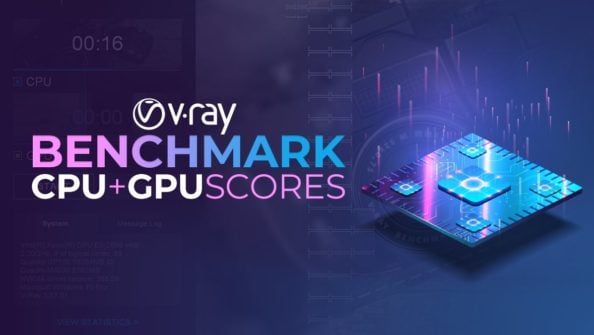

499 Comments
18 December, 2024
I would be more interested in the rendering results from image enhancing like Topaz Gigapixel or Ai Arty image enhancer. In my experience i can get the same 3d rendering results you see in this article. However the enhancing software is considerably slower on the cpus i tried when compared to 3d rendering. Same goes for mix cpu/gpu if the software allows for it such as Vance AI.
18 December, 2024
Adendum: My point is that with images, photos, art. It’s completely random and not generated data. You can see just how much such software struggles on certain parts of an image. It slows down the process exponentially. At times almost to the point of crashing the software. Seen 32GB of ram get eaten up on a 4x enlargement with noise reduction active.
5 August, 2023
I just bought the Threadripper 5975WX. I mainly work inside Zbrush doing some heavy poly counts sculpting, but I also do realistic renders inside Arnold; I was using the Threadripper 1920x. I hope to see a significant improvement on the render time. The only issue is the Cooling system, I’m not sure about it, but so far, I’m planning to go for the Ryujin III 360mm; I know that Noctua NH-U14S TR4-SP3 is a good option, but in my experience, an HSF tends to be a little weak than an AIO in the long run, if not, I’ll go for a custom water cooler.